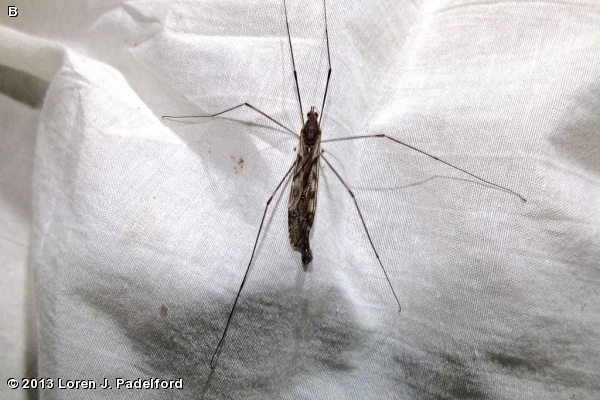
A very large crane fly with spotted wings and very long legs. Females can be up to 1.75 inches long (45 mm) with legs extending to 4.5 inches (115 mm). This crane fly can be identified by its very large size and the black velvety spots on the abdomen. Males and females are similar in appearance but the female has a somewhat pointed abdomen and the male is as shown in the photo. Both sexes have a yellow abdomen with a dark line along each side. The posterior end of the abdomen is all dark.
The Giant Crane Fly ranges from eastern U.S. and Canada west to Nebraska and Manitoba. These flies are common in our area and are attracted to lights at night. There are normally two flight periods for the adults, May/June and September/October.
The larvae of this species are aquatic and among the largest and most common aquatic invertebrates in streams of wooded areas, and are sought out as bait for fish. Larvae feed on decomposing leaves, thus playing an important role of breaking down organic matter in the water. Two generations occur, more numerous in late summer than in spring.
Disclaimer: The content of NatureSearch is provided by dedicated volunteer Naturalists of Fontenelle Forest who strive to provide the most accurate information available. Contributors of the images retain their copyrights. The point of contact for this page is: Loren Padelford.

